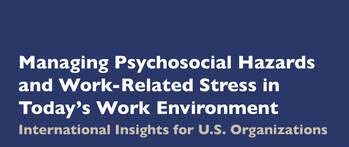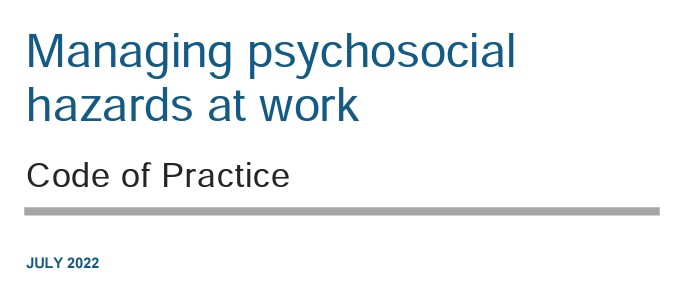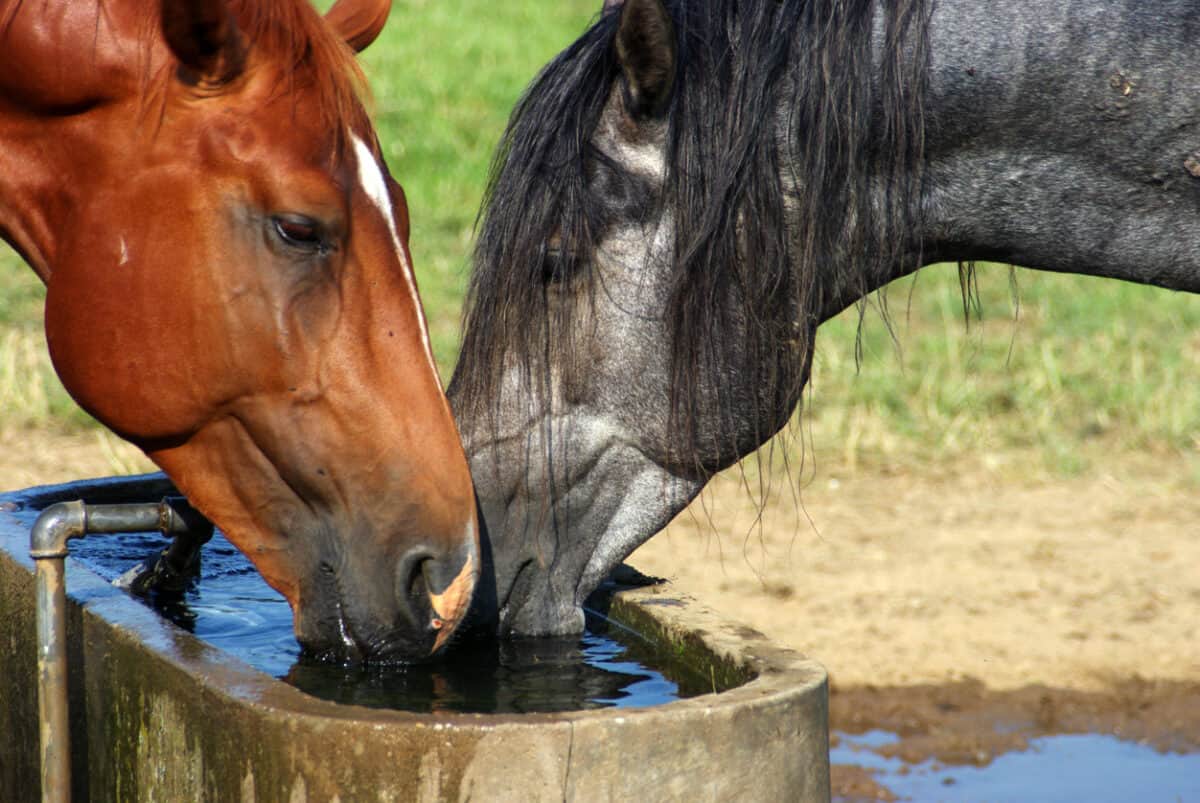A new book on workplace psychological hazards and laws has been published. The book “Managing Psychosocial Hazards and Work-Related Stress in Today’s Work Environment – International Insights for US Organizations” written by Ellen Pinkos Cobb, has a similar format to her coverage of international sexual harassment laws in a previous publication. Many occupational health and safety-related books written in the United States suffer from American parochialism. Cobb’s book is written for US organisations to show what workplace health and safety achievements are possible. The book is a very good summary of international changes in workplace psychosocial hazards.
Category: bullying
New mental health code and regulations
Last week Safe Work Australia released its “Managing psychosocial hazards at work – Code of Practice“. It offers solid guidance on psychosocial hazards reflective of the work already conducted by Victoria, New South Wales and other jurisdictions and in support of the new regulations in the Model Work Health and Safety laws. In connection with a blog article earlier today, the Code provides some insight into cognitive demands.
Sunlight on “an atmosphere of fear’
The Queensland Government and Premier Annastacia Palaszczuk have been under heavy criticism for their workplace cultures and leadership since the release of the Coaldrake report last week – a “review of culture and accountability in the Queensland public sector”.
The report is very critical of the Queensland government’s management of the public service, identifying problems with the overuse of external consultants, issues of unfairness, the lack of transparency and openness, bullying and more. These findings could apply to most of the contemporary public sectors in Australia nationally and locally (as well as most medium- to large-sized companies).
You can lead an opera company to water, but you can’t guarantee it will drink
Recently accusations of bullying have been made by members of Opera Australia. The details are reported in Limelight, but the newspaper article by Nathaneal Cooper is more illustrative of the general workplace mental health challenges of those in the performing arts. Performers are one of the most visible and fragile sectors of insecure and precarious work. Solutions to hazards and clues to strategic improvements might be more evident and practical if the bullying was assessed through the prism (and legislative obligations) of occupational health and safety (OHS) and insecure work.
A**hole Bosses – author perspective
Every couple of days, I receive media releases about new books, usually from Northern America, and interview opportunities with authors. If the subject ties into the themes of SafetyAtWorkBlog, I will email back for more information, including some questions. This usually results in a polite decline to cooperate as the “book does not suit your readership” or “the author feels that, although your perspective is valid, they feel it is outside his area of expertise”.
Those questions are usually about the influence of the working environment and organisational structures on management decisions and conduct. This week Tamica Sears, author of How to Tell if You’re an A**Hole Boss: A Humorous, Yet Honest Exposé on Misguided Management Behaviors, provided some perceptive responses. (Note: I have not read the book, so this is not a review)
Workplace bullying in politics
Workplace Bullying is once again in the headlines and once again related to politicians and the stress they face. Two cases in particular are the focus. One in Victoria involving Kaushaliya Vaghela who resigned from the Australian Labor Party after revealing accusations of bullying. The other concerns Senator Kimberley Kitching who died of a heart attack recently and who, some of her friends and colleagues assert, was bullied by work colleagues.
Allegations of this type are very difficult to investigate and filter as so many issues and allegations are raised in the media by anonymous sources.
Both jurisdictions, Victoria and Federal, are due for elections this year which may have contributed to the level and type of media attention.
Venus and Mars = HR and OHS but doesn’t have to
Twenty years ago, John Gray published a bestseller that discussed the binary split between Men and Women, a division that was allowed to reflect humanity’s biology and social constructs until very recently. Since the publication of “Men Are from Mars, Women Are from Venus”, our understanding of gender has almost been revolutionised from the reality of two sexes and genders to a spectrum of varieties, but our institutions and disciplines have not. Our socioeconomic structures are not so flexible, and it may take many decades to reach a consensus on sex and gender, if not equality.
Workplace relations is similarly slow to adapt to change mainly because it fails to have its own structure, instead piggybacking on business activity. Business has developed primarily from the male perspective to benefit men much more than women directly. Business reflects the gender roles of men and women both in job activities and power. The workplace relations subsets of Human Resources (HR) and Occupational Health and Safety (OHS) also reflect these binary practices and perhaps have the strongest long-term potential on the future of work.






